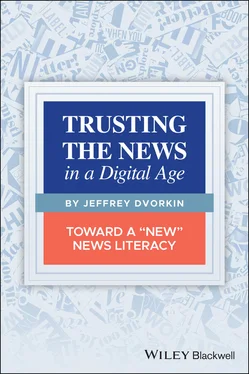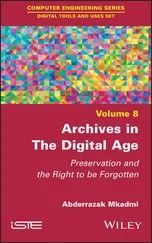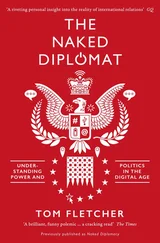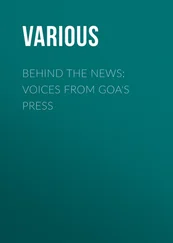Jeffrey Dvorkin - Trusting the News in a Digital Age
Здесь есть возможность читать онлайн «Jeffrey Dvorkin - Trusting the News in a Digital Age» — ознакомительный отрывок электронной книги совершенно бесплатно, а после прочтения отрывка купить полную версию. В некоторых случаях можно слушать аудио, скачать через торрент в формате fb2 и присутствует краткое содержание. Жанр: unrecognised, на английском языке. Описание произведения, (предисловие) а так же отзывы посетителей доступны на портале библиотеки ЛибКат.
- Название:Trusting the News in a Digital Age
- Автор:
- Жанр:
- Год:неизвестен
- ISBN:нет данных
- Рейтинг книги:4 / 5. Голосов: 1
-
Избранное:Добавить в избранное
- Отзывы:
-
Ваша оценка:
- 80
- 1
- 2
- 3
- 4
- 5
Trusting the News in a Digital Age: краткое содержание, описание и аннотация
Предлагаем к чтению аннотацию, описание, краткое содержание или предисловие (зависит от того, что написал сам автор книги «Trusting the News in a Digital Age»). Если вы не нашли необходимую информацию о книге — напишите в комментариях, мы постараемся отыскать её.
How to use critical thinking to discern real news from fake news in a Digital Age
Trusting the News in a Digital Age
Trusting the News in a Digital Age
Trusting the News in the Digital Age
Trusting the News in a Digital Age — читать онлайн ознакомительный отрывок
Ниже представлен текст книги, разбитый по страницам. Система сохранения места последней прочитанной страницы, позволяет с удобством читать онлайн бесплатно книгу «Trusting the News in a Digital Age», без необходимости каждый раз заново искать на чём Вы остановились. Поставьте закладку, и сможете в любой момент перейти на страницу, на которой закончили чтение.
Интервал:
Закладка:
Another resource is the Potter Box, a model devised by Ralph Potter, Jr., a professor of social ethics at Harvard Divinity School, to sort out the steps one needs to take to come to a proper decision on a complicated ethical matter when the solution is neither easy nor evident.
Potter thought it would be a good way for his students studying moral ethics to come to the right decisions about complicated dilemmas. But it also can work for journalism and the news too.
This is what it looks like:
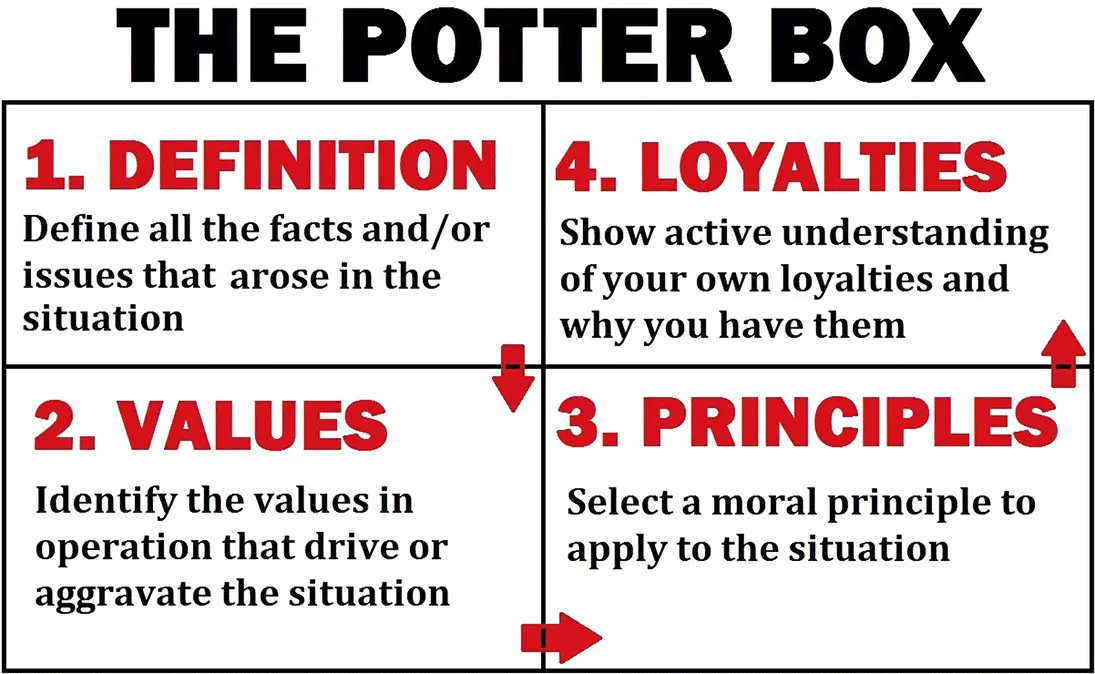
Ethical Dilemma #1: Reporting on Someone You Know
Using the Potter Box, describe how you might come to a decision on this ethical dilemma:
The president of the Students Union at your university is about to graduate. She is an honors student with a 4.0 GPA. She has been accepted to do graduate work at a prestigious university. But she has been caught drunk driving, and the penalty is severe. She may be sentenced to probation and community service. As a well‐known and popular campus personality, many people would be shocked and surprised if they found out .
You are a reporter for the student newspaper. You get a call from the student president, begging you not to report this story. Her offer to go to graduate school might be withdrawn, and her promising career would be over. She says she is truly sorry for what she has done. She asks you not to do the story .
By show of hands, what does the class think should happen now? Report or not?
Again using the Potter Box, what should your decision be?
Points of Discussion
1 Describe yourself in media terms. What do you read for news? For escape? For enjoyment?
2 Which news organization is most like you? Why?
3 Which news organization do you distrust the most? Why?
4 Which medium do you go to when you first wake up?
5 Keep a diary of all the media you consume over one day. Which ones were most useful? Least useful? Why?
Reference
1 Hare, K. (2020, December 9). Did we just experience the hardest decade in journalism? Poynter. https://www.poynter.org/journalisms‐hardest‐decade/
Additional Resources
Websites and universities promoting news literacy:
The Center for News Literacy, State University of New York at Stony Brook:
1 Center for News Literacy, Stony Brook University School of Journalism. (n.d.). Retrieved November 18, 2020. https://www.centerfornewsliteracy.org
The European Centre for News Literacy:
1 Revolutions. (n.d.). Revolutions global trends and regional issues. Retrieved November 18, 2020. http://revjournal.org/tag/european‐center‐for‐news‐literacy
The News Literacy Project:
1 News Literacy Project. (n.d.). Retrieved on November 18, 2020. https://newslit.org
1 North Dakota Public Library System. (n.d.). Retrieved November 18, 2020. http://www.library.nd.gov/
The Reuters Institute for the Study of Politics at Oxford.
1 Reuters Institute for the Study of Journalism. (n.d.). Retrieved November 18, 2020. https://reutersinstitute.politics.ox.ac.uk
Other additional resources:
Non‐journalistic sources in a digital age:
1 Bell, E. and Owen, T. (eds.) (2017). Journalism After Snowden: The future of the free press in the surveillance state. Columbia University Press.
How to be skeptical but not cynical in journalism:
1 City News Bureau of Chicago. (2020, October 12). In Wikipedia. https://en.wikipedia.org/wiki/City_News_Bureau_of_Chicago
1 Davis, B. (2017, September 20). Ethical decision making in the journalism world. Scripps Media Ethics/ Blogspot https://scrippsmediaethics.blogspot.com/2017/09/ethical‐decision‐making‐in‐journalism.html.
How the digital culture has made journalism more complex:
1 McBride, K. and Rosenstiel, T. (2014). The New Ethics of Journalism. Sage Publications.
The essential guide to doing good and great ethical journalism:
1 Kovach, B. and Rosenstiel, T. (2014). The Elements of Jouranlism. Three Rivers Press.
1 Morozov, E. (2011). The Net Delusion. Public Affairs Books.
Pew Research Center trends and facts on newspapers:
1 Pew Research Center. (n.d.). Newspapers. Retrieved November 18, 2020. https://www.pewresearch.org/topics/newspapers/
2 Changing Definitions of News
TAKEAWAYS FROM CHAPTER 2
1 Why there is a human need for information
2 How different technologies and platforms change information, sometimes with unintended consequences
3 How the news was changed when the technologies changed
4 How people define themselves by the media they consume
5 Changing cultural, institutional, and economic influences on the news
6 The effect of digital technology on the news
Curiosity is one of our deepest instincts.
And technologies have always been invented and adapted to serve our instinctive need to know.
In Europe until the 15 thcentury, literacy and the technology that served it were limited to the writings (and copying) of biblical texts. This was done exclusively in Latin by church officials whose purpose was to write the Bible out by hand. This was extremely labor intensive, and only one copy of the Bible would be produced over as many as two years.
But in 1455, a German printer named Johannes Gutenberg created a revolutionary invention: movable typesetting. This allowed for more efficient and mechanical printing of the Bible and was an early form of mass production, allowing a copy to be printed once every few weeks rather than every few years. Gutenberg wasn’t the first to come up with this remarkable invention. Korean and Chinese printers invented a similar system two centuries previously. But Gutenberg had no way of knowing this due to the lack of contact between Europe and Asia at that time. His invention was nothing short of revolutionary and changed the way Europeans (and North Americans) communicated.
We need to appreciate the enormous implications of Gutenberg’s moveable type for advancing communication. No longer could authorities, such as the Roman Catholic Church or a local potentate, maintain a monopoly on information. There were frequent attempts over the centuries to control the spread of information, but Gutenberg’s revolution proved to be unstoppable. Print newspapers, pamphlets, and, much later, electronic inventions, such as the telegraph and the telephone, allowed for a more rapid and less controlled spread of information. This coincided with the growth of literacy and public education. As written information proliferated, more people had access to books, and literacy increased. As a result, people became more curious about and engaged in the world around them. A new industrial culture of producing, sharing, and disseminating information accelerated by the early 19 thcentury in Europe and North America. It was the beginning of what we recognize today as the modern news culture.
In the early 20 thCentury, the news adapted to other new technologies, such as photography, radio, and, by the 1950s, television.
Just as Gutenberg’s invention forever changed the way in which Europeans were able to articulate and express their needs, the application of electricity to new communications methods rapidly changed the world once more. Citizens in countries with access to these new technological advances were enthralled and demanded more information more quickly and more reliably.
Like Gutenberg’s invention, the effect of digitalization on the news was equally transformative. The news as a technological and cultural phenomenon was already highly profitable and hugely competitive. Newspapers in the UK and the US battled for market supremacy with lurid headlines and graphic illustrations and sometimes shocking photographs of actual news events. Throughout this, the culture of journalism and reporting grew to serve this new industry and the insatiable curiosity about other people’s lives.
Читать дальшеИнтервал:
Закладка:
Похожие книги на «Trusting the News in a Digital Age»
Представляем Вашему вниманию похожие книги на «Trusting the News in a Digital Age» списком для выбора. Мы отобрали схожую по названию и смыслу литературу в надежде предоставить читателям больше вариантов отыскать новые, интересные, ещё непрочитанные произведения.
Обсуждение, отзывы о книге «Trusting the News in a Digital Age» и просто собственные мнения читателей. Оставьте ваши комментарии, напишите, что Вы думаете о произведении, его смысле или главных героях. Укажите что конкретно понравилось, а что нет, и почему Вы так считаете.
